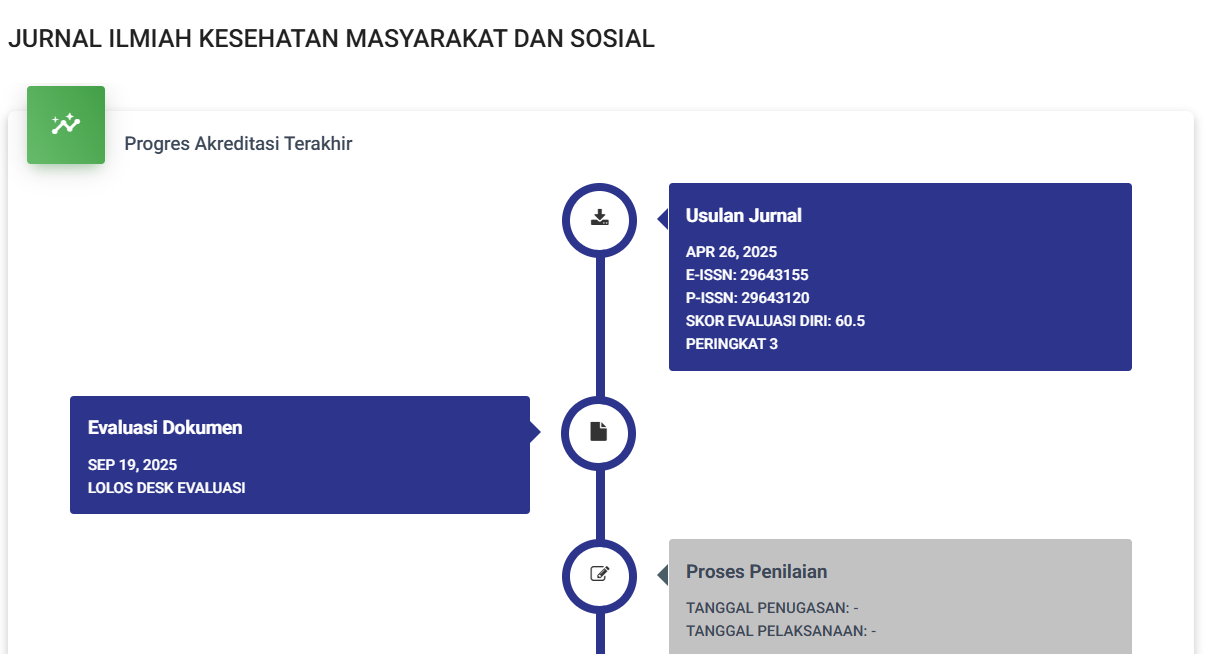IDENTIFIKASI JENIS TELUR NEMATODA USUS GOLONGAN Soil Transmitted Helminth (STH) DI KAWASAN PASIR PANTAI KECAMATAN SEKUPANG KOTA BATAM
DOI:
https://doi.org/10.59024/jikas.v2i2.769Keywords:
types eggs, nematodes, intestines, Soil Transmitted Helminths (STH), sand beach Sekupang Batam CityAbstract
. Soil Transmitted Helminth (STH) is a group of intestinal nematode worms that require soil for the maturation process so that there is a change from a non-infective stage to an infective stage. This study aims to find out whether in the coastal sand area of Sekupang District, Batam City, there are intestinal nematode eggs of the Soil Transmitted Helminth (STH) group. The method used in this study is a survey method by taking sand samples from 3 different beaches, namely Tanjung Pinggir beach, Dangas beach, and Marina beach, then the sample is examined, namely by soaking the sample with 15 ml of saturated NaCl for 30 minutes stirring until evenly distributed with a stirring rod then transferred the soaking water in a test tube. Deck glass is placed on top at the mouth of the tube for 60 minutes. Then the sample was observed under a microscope with a magnification of 10 to 40 then analyzed descriptively by making a picture systematically. The results showed that there were no intestinal nematode worm eggs of the STH group in the beach sand sample so that it could be concluded that the tannjung beach sand area of Sekupang District, Batam City was free from contamination of intestinal nematode worm eggs of the soil transmitted helmith (STH) group.
References
Ariwati, d. L. (2017). Infeksi Ascaris lumbricoides. (Skripsi). Bali: Fakultas Kedokteran Universitas Udayana
Bramantyo, A. (2014). Perbedaan Flotasi Menggunakan Larutan ZnSO4 denganKato-Katz Untuk Pemeriksaan Kuantitatif Tinja. Universitas Diponegoro, Semarang.
Fatmasari, K. (2020). Identifikasi Telur Cacing Nematoda Usus Menggunakan Metode Sedimentasi Pada Sampel Kuku Petani Sawah Di Wilayah Kelurahan Tanete Kecamatan Bulukumpa Kabupaten Bulukumba‟, Jurnal Tlm Blood Smear, 1(1), Pp. 18–23.
Haziqah MTF, RN Farhani dan IA Hanim. (2021). Prevalensi dan keragaman spesies soiltransmitted helminths (STH) dari sampel tanah terpilih di Pulau Penang, Malaysia. Sekolah Ilmu Biologi, Universiti Sains Malaysia
Herlisa A. V. Tuuk, Victor D. Pijoh, Janno B. B. Bernadus. (2020). “Survei Penyakit Kecacingan Pada Pekerja Tambang Tradisional di Desa Soyoan Kecamatan Ratatotok Kabupaten Minahasa Tenggara”. Universitas Sam Ratulangi Sam Ratulangi Manado. eBiomedik. :81-89
Nurul. (2018). Analisa Kontaminasi Telur Nematoda Usus Golongan Soil Transmitted Helminths (STH) Pada Sampel Pasir di Pantai Daerah Tanjung Kabupaten Sampang. Diploma thesis, Universitas Muhammadiyah Surabaya.
Permenkes. (2017). PMK No 15 tentang Penanggulangan Cacingan. In Lampiran Peraturan Menteri Kesehatan Republik Indonesia (p. 17).
Widarti, W. (2018). Identifikasi Telur Nematoda Usus Pada Kol (Brassica Oleraceae) Di Pasar Tradisional Kota Makassar. Jurnal Media Analis. Politeknik Kesehatan Makassar Vol. 1, Edisi 1. Pp. 78-82
Widiyono. (2011). Penyakit Tropis : Epidemiologi, Penularan, Pencegahan & Pemberantasannya. Penerbit Erlangga, Jakarta.
Downloads
Published
Issue
Section
License
Copyright (c) 2024 JURNAL ILMIAH KESEHATAN MASYARAKAT DAN SOSIAL

This work is licensed under a Creative Commons Attribution-ShareAlike 4.0 International License.










